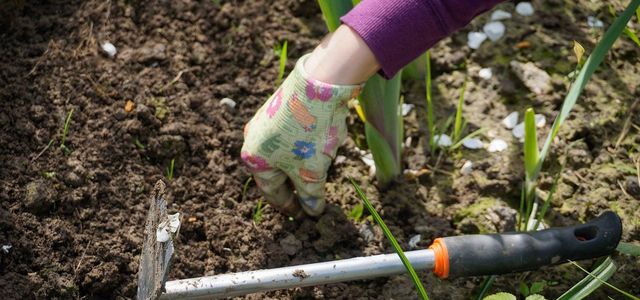
Combating couch grass sustainably is not impossible, but it is definitely a bit of a challenge. We show you which measures work – and which don’t.
The couch grass is one of the most unpopular weeds in the home garden. It belongs to the sweet grass family and is found almost everywhere in the world. Couchgrass is difficult to control, because it spreads not only by seeds, but also underground by so-called rhizomes. The rhizomes usually run horizontally in the soil and form numerous daughter plants. In one year, they can grow up to one meter in all directions, which makes successful control difficult.
Another problem is that couch grass is a pioneer plant and therefore very adaptable. Pioneer plants grow on soils that other plants avoid, for example on very sandy, nutrient-poor or clayey subsoils.
Fighting couch grass: these are your options
Perhaps you can already guess: to fight couch grass is not easy – but definitely not impossible. In any case, you should keep in mind that a superficial fight is not enough, because the rhizomes always produce new plantlets. It is also important that you act immediately when you see the first couch grass. Do not wait until the plant has spread.
It is not effective to
- cutting or superficially tearing off the couch grass,
- weeding or tilling
- or only lightly digging it up.
Instead, you must tackle the weed primarily underground. In the best case, the rhizomes must be completely out of the ground. You should also remove even the smallest pieces of root, because these can also sprout again.
Dig up the roots carefully and, above all, deep enough and collect the broken-off parts of the roots with your hands. It is best to use a small digging fork or a fork.
In sandy soil, you can simply pull the rhizomes out of the ground. Make sure that they do not break off. If they do, you need to look for the torn off piece and remove it as well.
Alternatively, you can control the rhizomes with a film that is impermeable to air and light. You simply put it over the affected area. The plants will then die, but of course also everything else that grows in the area. Utopia also advises against the use of plastic when there are more sustainable methods.
Important: Do not dispose of the plant parts of the couch grass on the compost. There they will almost certainly sprout again. Throw small amounts in the household garbage, larger ones are best taken to your city’s composting facility.
After the fight: a tip

If you were able to get rid of the couch grass, it is worth planting potatoes in the vacated area. These form dense foliage, and couch grass requires a lot of light. So if there are any rhizome pieces left in the soil, the potatoes will keep the necessary light away from them. As a result, they die or do not grow at all.

